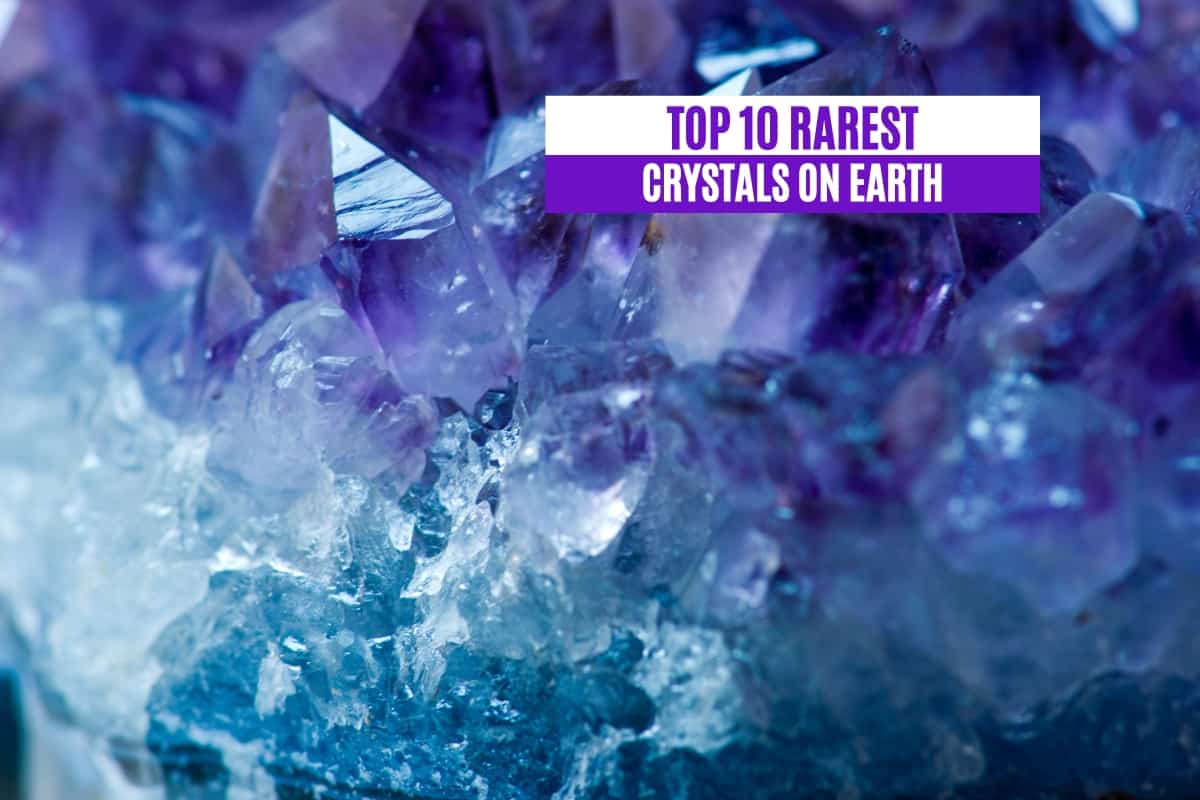Crystals can be as large as a car or as small as a grain of sand. But while some (looking at you, quartz) are quite common, others are almost impossible to find. But what are the rarest crystals in the world, and why are they challenging to come by?
The rarest crystals include taaffeite, musgravite, and poudretteite. These stones aren’t often unearthed, and in some cases (as with taaffeite), only a handful of specimens are available. Remote location, unique coloration, and unusual mineral composition often make crystals rare.
Are you eager to discover which crystals and gemstones are the rarest on Earth? This ranking will give you the low-down on everything you need to know about the planet’s most uncommon crystals!
Here Are the Top 10 Rarest Crystals on Earth:
- Taaffeite
- Musgravite
- Poudretteite
- Painite
- Grandidierite
- Larimar
- Demantoid
- Bixbite
- Alexandrite
- Tanzanite
10. Tanzanite
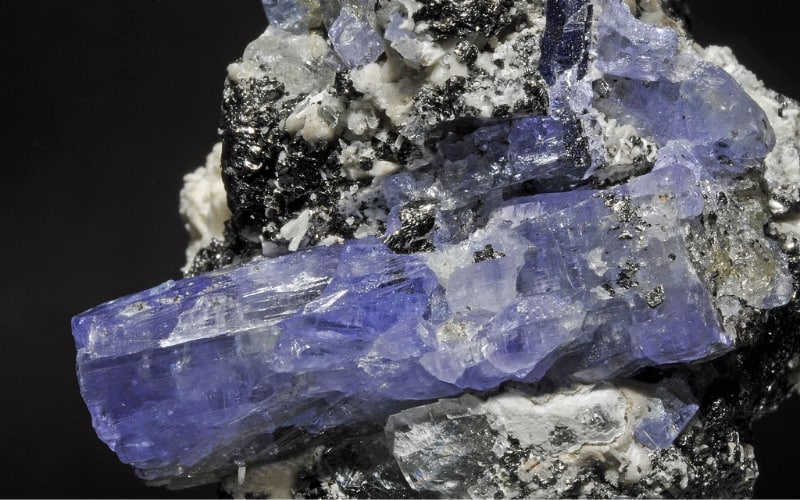
Many of the world’s most expensive meteorites are pricey because they contain rare minerals or are unnaturally large. But several of the rarest crystals sell for top-dollar prices because of their beauty and scarcity.
This includes tanzanite, a sapphire-blue crystal found in only one place on Earth: Tanzania. In fact, this bluish-purple crystal only comes from one region of this African country, the Simanjiro District.
Consequently, mining for tanzanite is a tough gig. After all, once these gems stop appearing (which will happen eventually), there likely won’t be another source ever found again.
So, if you’re in the market for some tanzanite jewelry, it’s best to invest now. Prices for this breathtakingly beautiful stone will likely skyrocket in the future because of its rarity.
Why Is It So Rare?
Unlike quartz, which is so common that small particles of it are often found in sand, tanzanite is only found in a single spot on Earth: the base of Mount Kilimanjaro in the Simanjiro District of Tanzania.
Because it’s only mined in a single location and is unlikely to be found anywhere else on the planet, the supply of tanzanite is exceptionally limited.
Still, more tanzanite is unearthed with each passing year. The same can’t be said for the next rare crystal on this ranking, alexandrite.
9. Alexandrite
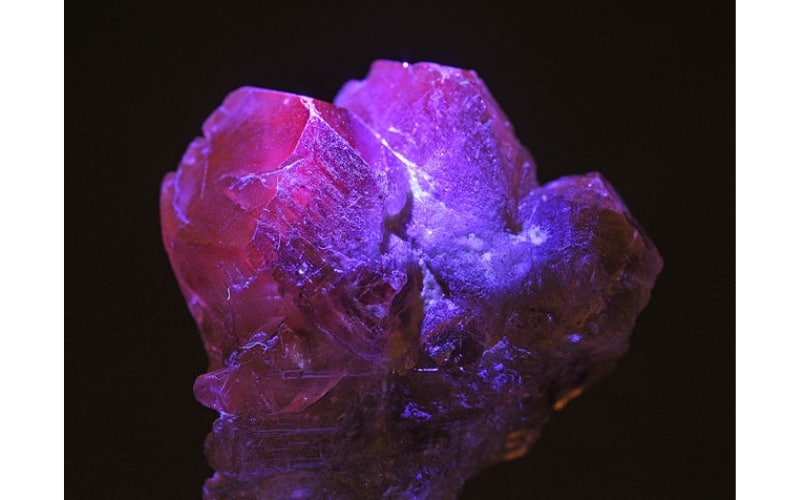
Alexandrite is one of the most interesting crystals due to its ability to change color. Depending on the lighting, this stone can appear ruby red or emerald green.
But while this stone is the birthstone for those born in June, true natural alexandrite gemstones are hard to find.
Initially discovered in the 1830s, this stone is named for Alexander I, the Emperor of Russia, during the early 1800s. It was originally thought to only exist in Russia (specifically the Ural Mountains), though there are limited sources in parts of Africa and Brazil.
Still, the most precious and perhaps most beautiful alexandrite stones are those few found in Russia during the 1830s.
As such, stones from that region and period can sell for millions. Notably, one of the most expensive crystals in the world is a large piece of alexandrite (called the Whitney Alexandrite)!
Why Is It So Rare?
The chemical and structural composition of alexandrite makes it a rare find.
Natural alexandrite is capable of changing colors because it contains two minerals that interact with one another:
- Chrysoberyl, and
- Beryllium
These minerals hardly ever come into contact with one another, so the chances of them forming into a single crystal (alexandrite) are low. Additionally, the chances of an alexandrite crystal forming into a large flawless stone are even rarer, making this gem quite valuable.
Most alexandrite stones available today are lab-created, and these “synthetic” gemstones are far more affordable than their naturally occurring counterparts.
8. Bixbite
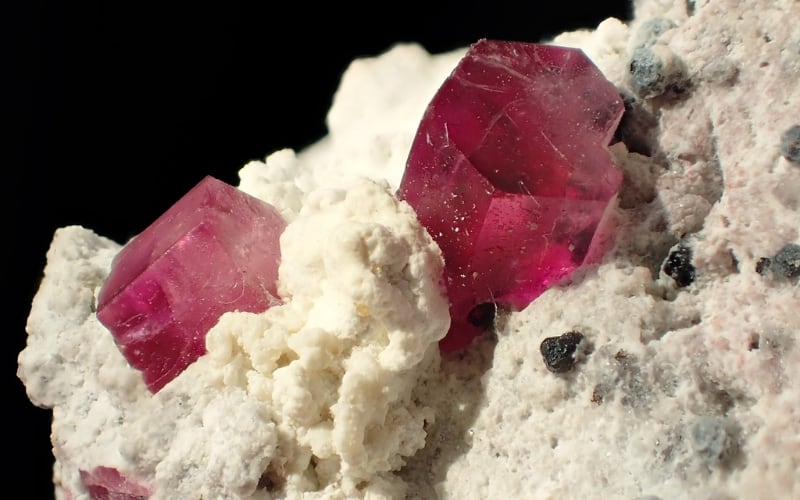
If you enjoy the rich splendor of rubies and garnets, you’ll likely fall in love with bixbite (also called red beryl or red emerald) crystals. But before you get your hopes up in acquiring some sparkling red bixbite, you should be aware that this crystal is exceedingly rare.
According to the Utah Geological Survey, “…one crystal of red beryl is found for every 150,000 gem-quality diamonds.” This means that bixbite is more than 100,000 more challenging to find than diamonds!
Most bixbite is found in Utah, but these crystals are often too small to be used for jewelry. In fact, the biggest gem-quality (with facets) piece of bixbite is only 8 carats.
Why Is It So Rare?
Like alexandrite, bixbite (red beryl) is rare because the geological processes required to make it are highly unlikely. To form bixbite crystals, you need just the right mix and ratio of minerals (beryllium and manganese).
Beryllium is one of the base “ingredients” of most crystals and gemstones, and it’s not the most abundant mineral present in the Earth’s crust. So finding it naturally occurring with manganese to form red beryl is statistically unlikely.
7. Demantoid
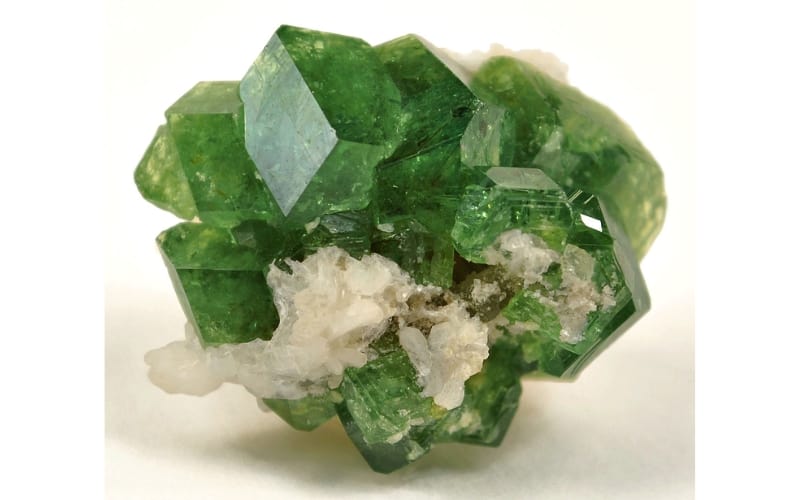
Gazing into a demantoid crystal (also called demantoid garnet) is often like looking into a foggy pine forest, as many demantoid stones have a rich, almost emerald-like hue. But this particular crystal is far rarer than emeralds.
Like alexandrite, demantoid was initially discovered in Russia during the 19th century. Notably, it was also discovered at the foothills of the Ural Mountains, which seem to be rich in rare and precious minerals and crystals.
Thanks to its eye-catching green hue, demantoid quickly became popular among Russia’s aristocracy and royal family members. It eventually gained an international reputation and following, though supply has never kept up with demand, making this crystal uniquely valuable.
Why Is It So Rare?
Most andradite garnets are brown, yellow, or orange-red thanks to their iron content. But high-quality demantoid crystals are a brilliant green because they contain more chromium than iron.
While iron and chromium aren’t particularly rare minerals, the likelihood of them combining to form demantoid is low, making this crystal a comparatively rare find.
6. Larimar
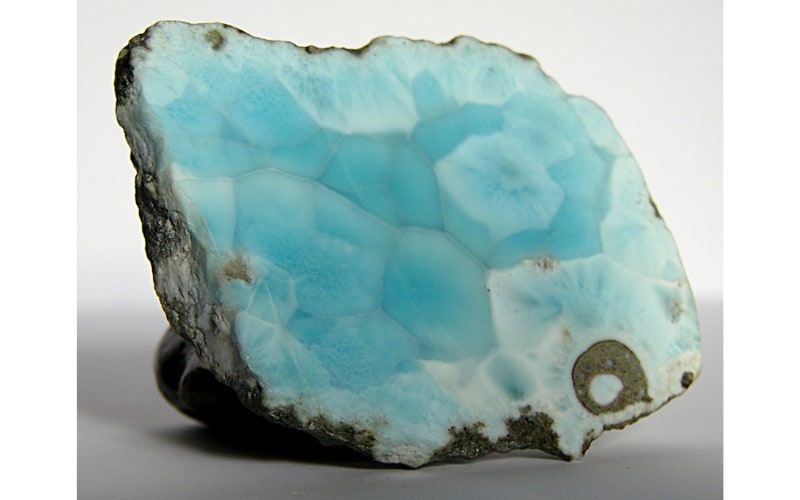
Unless you’re a geologist or an avid gemstone collector, there’s a good chance you’ve never heard of larimar.
After all, this opal-like blue stone is one of the rarest crystals on Earth, and like tanzanite, it’s only found in a single location: the Dominican Republic.
Though you can find and purchase jewelry containing larimar stones, the fact that this crystal only comes from one place makes it much rarer than those found around the globe.
Why Is It So Rare?
The azure sky-like larimar crystal is rare because it’s only found near Barahona, in the Dominican Republic. Its formation and coloration are also highly unlikely.
Like basalt (a stone known for its black and gray hues), larimar is a volcanic crystal. But instead of being dark like basalt or pumice, larimar is blue, likely due to a mix of calcium and copper.
It’s also formed over thousands (if not millions) of years, so producing lab-grown larimar is virtually impossible. For this reason, the supply of larimar stone is limited, just like tanzanite.
5. Grandidierite
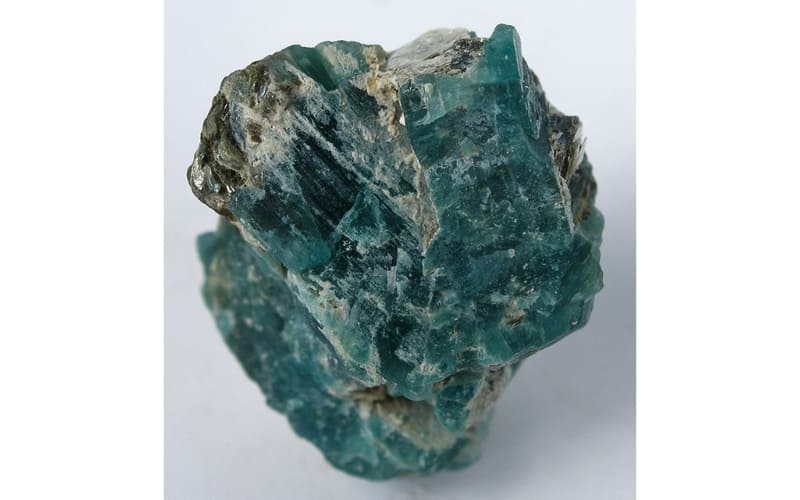
The name of this crystal is quite grand, but don’t expect to pick up any grandidierite jewelry any time soon. This blue-green stone is primarily found in Madagascar, an island nation off the coast of East Africa.
Because Madagascar is home to many unique species (plants, insects, and animals), it’s one of the most protected places on Earth. As you can imagine, mining for crystals is heavily regulated, so discovering more Madagascan grandidierite is a long process.
Fortunately, you can find this crystal in other places, such as Sri Lanka and Malawi. But the stone reserves are still limited, so finding a little grandidierite doesn’t mean you’ve suddenly stumbled on a treasure trove of the stuff.
Why Is It So Rare?
Grandidierite is essentially a mix of iron (which gives it its blue color) and magnesium. These elements aren’t particularly rare, but unlike diamonds, grandidierite crystals are quite brittle.
So, when large grandidierite crystals form, they tend to break into smaller pieces as soil pressure increases. For this reason, finding gems that are large enough to become faceted stones is incredibly challenging.
This crystal also tends to form only rarely, making the chances of discovering jewelry-worthy grandidierite low. Consequently, most jewelry featuring natural grandidierite commands high prices.
4. Painite
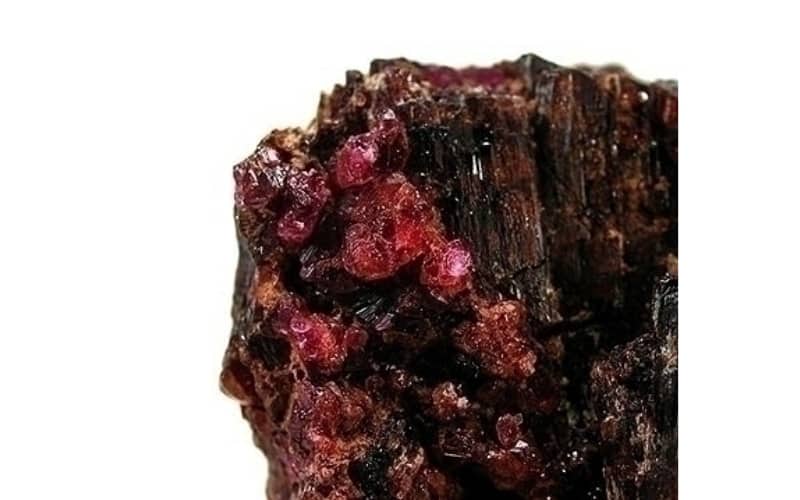
Fewer than 1,000 painite specimens have been unearthed, making it hands-down one of the rarest crystals on Earth.
Discovered in Myanmar (Burma), this crystal looks similar to a ruby or garnet. Still, it has a noticeably darker coloration that often includes smoky black and earthy brown hues.
Like many other rare crystals and gemstones, painite’s source is limited to a single location: Myanmar. As a result, mining for this reddish stone is limited, and the supply is quite low.
While hundreds of painite crystals exist today, few of these are gem-quality. Consequently, finding a faceted painite gemstone is like discovering a pig that can fly. While not technically impossible (after all, genetic mutations happen every once and a while), it’s highly unlikely!
The Guinness Book of World Records has long purported that painite is the rarest gem mineral.
Why Is It So Rare?
Painite only forms in Myanmar, a politically unstable country situated between Thailand and Nepal. Because of the country’s instability, it’s challenging for international buyers and sellers to access its painite supply. This partially contributes to the rarity of painite crystals.
Because of their rarity, several of the world’s most expensive elements are costly. The same is true of crystals, including painite. There’s so little of this particular crystal that it’s essentially priceless!
3. Poudretteite
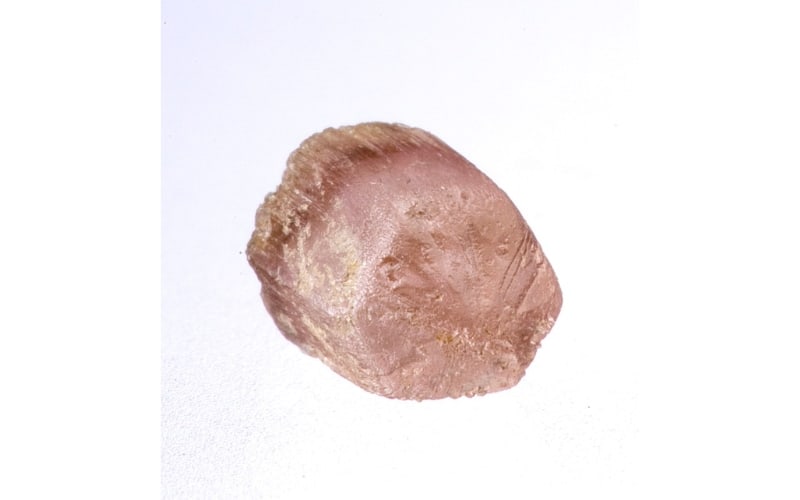
If you’re found of rose gold and lavender hues, you’ll probably enjoy the look of poudretteite, a multi-color semi-transparent crystal that tends to exhibit eye-catching purples, pinsk, and yellows.
But this sparkling stone is found only in two places: Quebec, Canada and Mogok, Myanmar. So the supply of poudretteite is limited.
Like grandidierite, poudretteite tends to grow into tiny crystals that aren’t large enough to become faceted gemstones. The few specimens that are hefty enough to become jewelry pieces are prized possessions that rarely ever make their way to auctions or storefronts.
Why Is It So Rare?
Unlike other rare crystals that are primarily made of two or three minerals, poudretteite is made of four distinct elements:
- Potassium
- Boron
- Sodium
- Silicate
Finding these minerals naturally occurring together in large enough quantities to produce poudrettieite is highly unlikely.
But composition isn’t the only reason this crystal is so hard to find. The limited number of sources (Canada and Myanmar) also contributes to the rarity of this pink-purple-yellow stone.
2. Musgravite
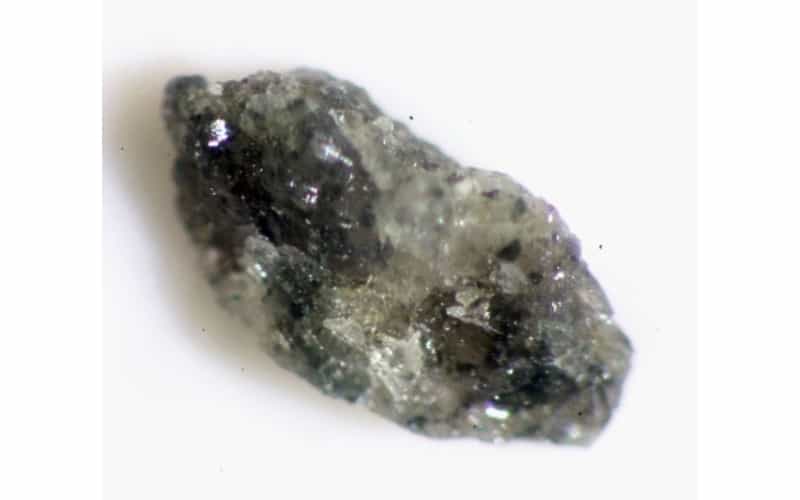
Because there are fewer than 30 musgravite crystals above ground, getting your hands on a sample is bound to prove challenging.
Named for the location where it forms (the Musgrave Ranges in South Australia), this grey translucent stone is actually part of the taaffeite mineral family. Some even consider it rarer and more valuable than taaffeite crystals, though it seems that musgravite is more plentiful.
Little is known about this precious crystal outside of its origin and chemical composition. Though you can find musgravite in multiple places, including Greenland and Antarctica, the only pieces large enough for faceting (shaping into stones for use in jewelry) primarily come from Tanzania, just like tanzanite!
Why Is It So Rare?
Musgravite tends to form in hard-to-reach locations. And when it does form, it generally grows into tiny crystals that aren’t large enough to become legitimate gemstones.
It’s also chemically complex. This crystal is made of several minerals and elements, including aluminum, oxygen, and magnesium. The chances of these elements being in the right place and in the right quantities to form into musgravite are low, so this crystal rarely ever forms.
1. Taaffeite

The rarest crystal on Earth is taaffeite. As of 1982, fewer than a dozen taaffeite stones had been unearthed. It’s unlikely that many more have been discovered since then.
While taaffeite has several structural similarities to musgravite, it features a much different coloration.
Musgravite tends to be a translucent grey color, but natural taaffeite is a rich, smoky purple. Faceted specimens (rare as they are) are far brighter and more transparent.
One of the things that makes taaffeite so challenging to identify and find is that it’s quite similar to spinel, a rare mineral that occasionally forms into reddish crystals.
For this reason, the actual supply of taaffeite may be as low as ten pieces. But it could be much higher, as discerning the difference between spinel and taaffeite requires a keen eye and a thorough understanding of geology and gemstones.
Why Is It So Rare?
Taaffeite crystals tend to be tiny, making them useless in terms of jewelry making. The size of these crystals also makes taaffeite comparatively rare, especially when juxtaposed against other minerals like quartz which can form massive pillars and stones.
Additionally, this stone’s similarity to spinel makes it difficult to identify. In fact, the first taaffeite specimen every discovered wasn’t a raw crystal or unpolished stone. Instead, it was a faceted gem that had been misidentified as spinel!
What Are the Rarest Crystals on Earth?
The rarest crystals in the world include taaffeite, musgravite, and poudretteite. Taaffeite is the rarest of them all. Less than a dozen taaffeite stones had been unearthed by the 1980s!
The rarest crystals are made of uncommon minerals, feature distinct colors that differentiate them from similar stones, or are located in hard-to-reach places. Some (like larimar) are only found in one place on Earth.
Learn more about the world’s most expensive natural wonders by checking out these related articles now!

